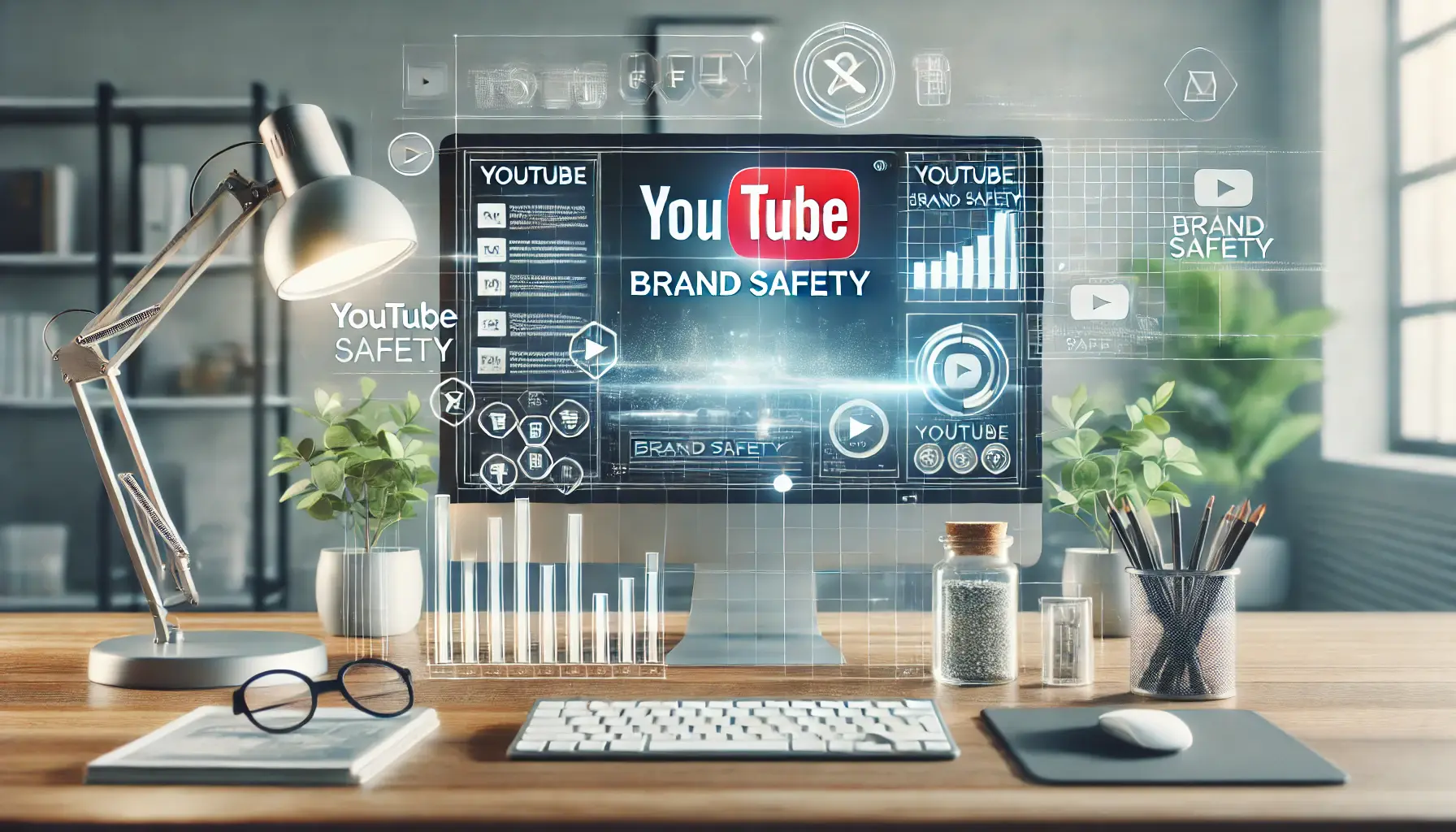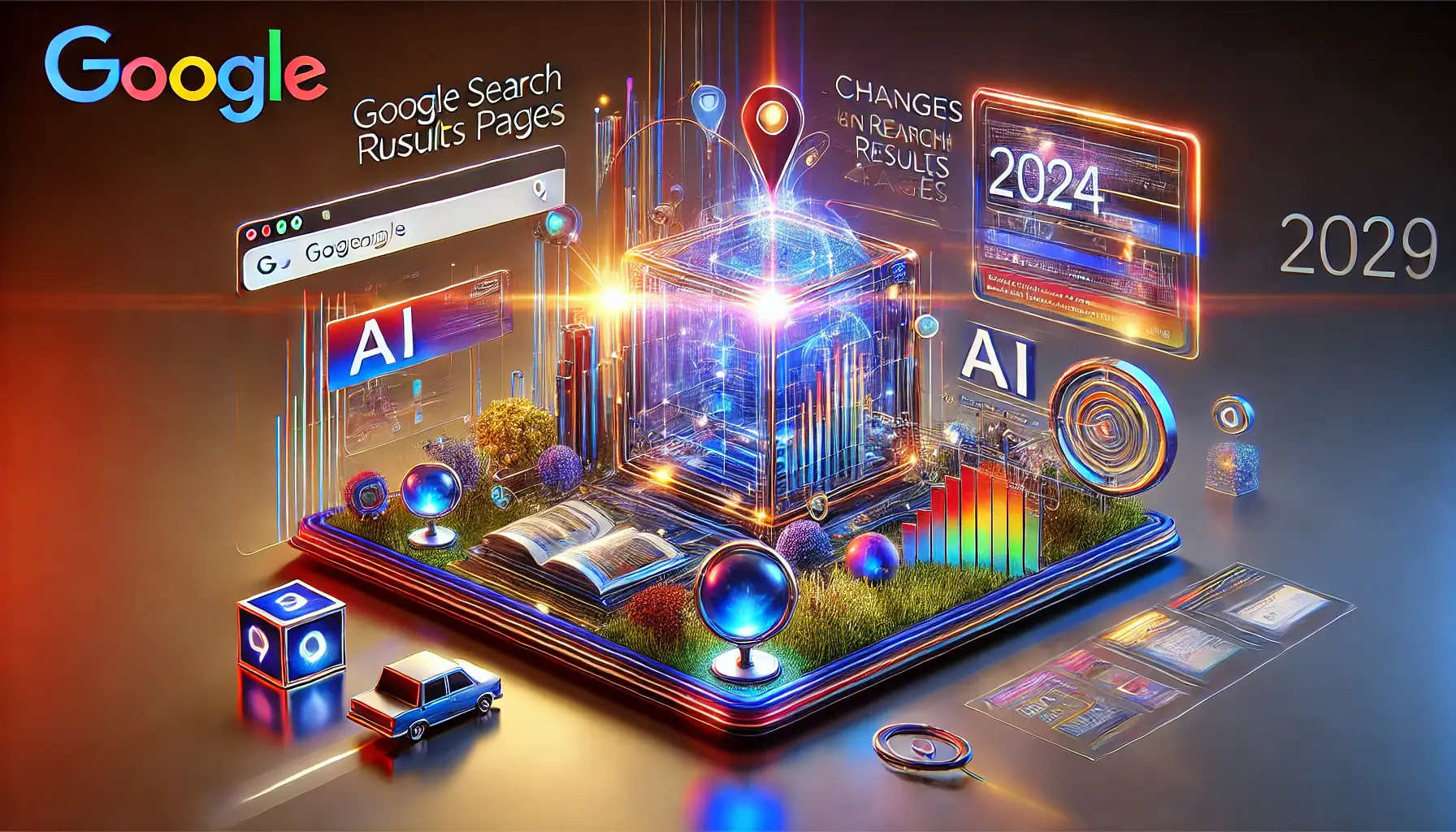In the fast-moving world of digital marketing, staying ahead of the evolving controls of campaigns is key to success.
Entering 2024, Google Ads continues to unleash groundbreaking changes that demand marketers adapt quickly.
These changes not only enhance the efficiency of campaigns but also afford opportunities to leverage automationThe use of technology to perform tasks without human intervention., privacy measures, and advanced insights like never before.
But how do you embrace these advancements and turn them into a competitive advantage?
This article dives into the key areas you need to focus on to stay ahead.
- Embracing Automation in Google Ads Campaigns
- Navigating Privacy Changes in Digital Advertising
- Enhancing Brand Safety with Advanced Controls
- Maximizing Campaign Performance with Google’s AI-Powered Tools
- Leveraging AI-Driven Insights for Campaign Optimization
- Adapting to Campaign Controls: A Path to Success
- Commonly Asked Questions About Campaign Controls on Google Ads
Embracing Automation in Google Ads Campaigns
Automation is revolutionizing the way marketers manage and optimize their Google Ads campaigns.
By reducing manual efforts and utilizing machine learning, Google Ads provides tools that significantly improve performance while saving time.
But how can you make the most of these automation features?
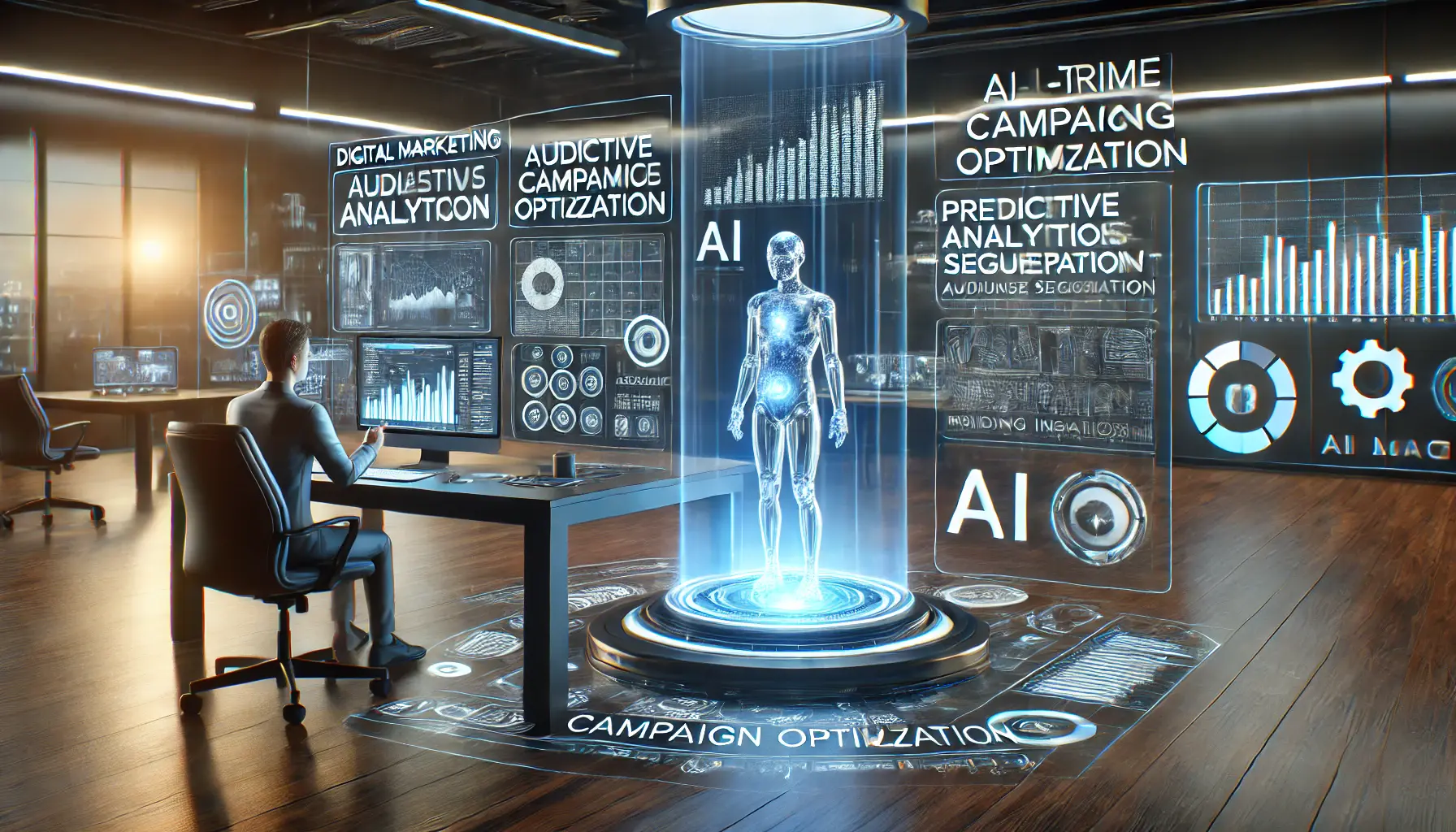
Harnessing AI to optimize digital marketing campaigns for better performance.
Leveraging AI for Enhanced Campaign Performance
Artificial Intelligence is at the core of automation in Google Ads, from predictive analyticsThe use of statistical methods and machine learning to predict future outcomes based on historical data. to smart suggestions that help marketers predict outcomes and refine their strategies.
By analyzing past data and user behaviors, AI-driven campaigns can deliver ads at the right time to the right audience.
- Smart Campaigns: Ideal for small businesses, they automatically create ads based on business goals and budgets.
- Predictive Bidding: AI adjusts bids in real-time to maximize conversions or revenue.
- Ad Customization: AI tailors ad copy dynamically to match audience preferences.
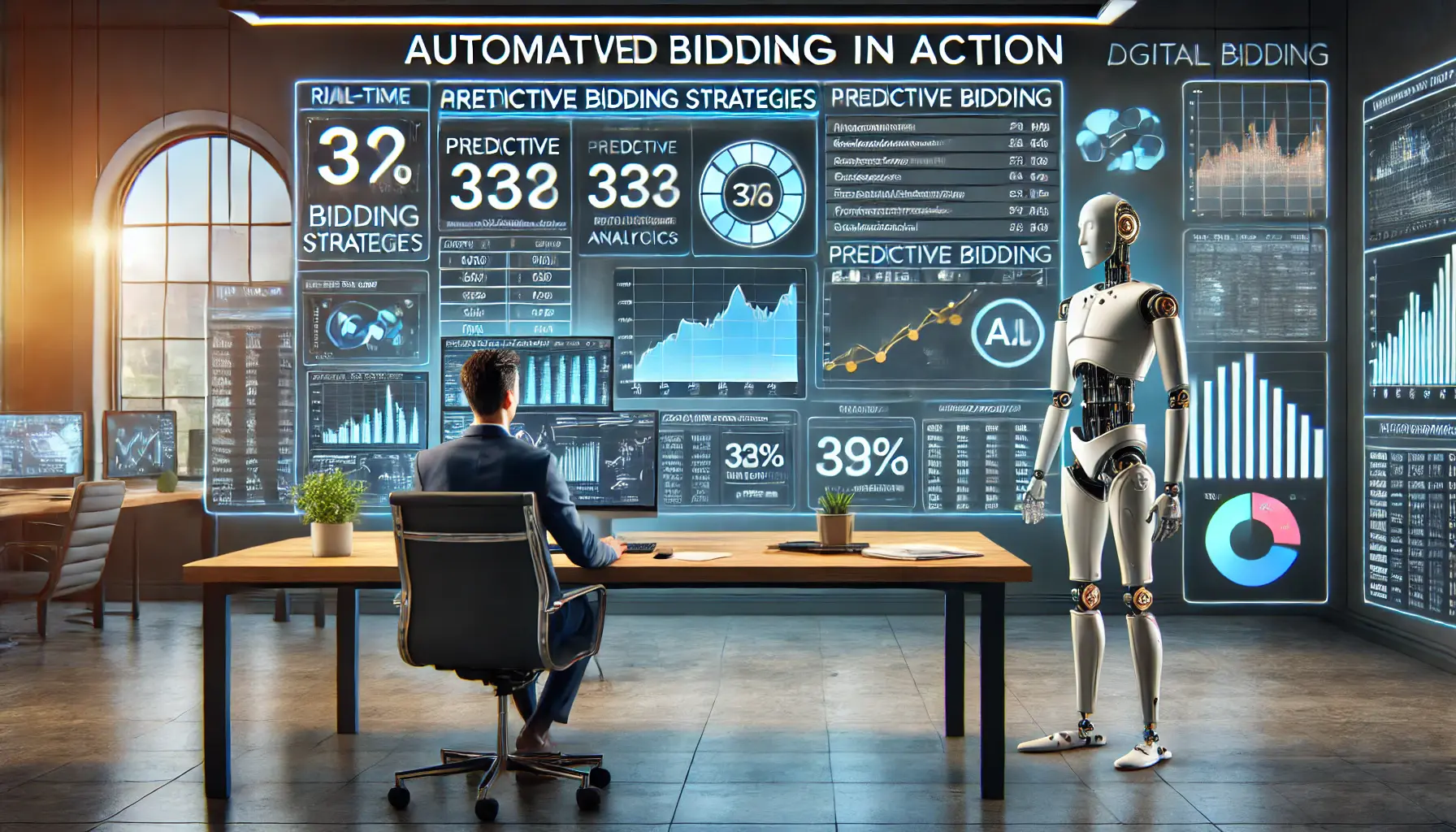
Automated bidding strategies: Optimizing ad performance with real-time analytics.
Implementing Automated Bidding Strategies
Gone are the days of manual bidding.
Automated bidding strategies now dominate the landscape, enabling you to focus on strategic decisions rather than micromanagement.
- Target CPA (Cost-Per-Acquisition): Adjusts bids to help you achieve a specific cost-per-conversion.
- Target ROAS (Return on Ad Spend): Maximizes revenue with your target return on ad spend in mind.
- Maximize Conversions: Automatically sets bids to achieve the most conversions within your budget.
Trying different strategies will help determine which best aligns with your campaign goals.
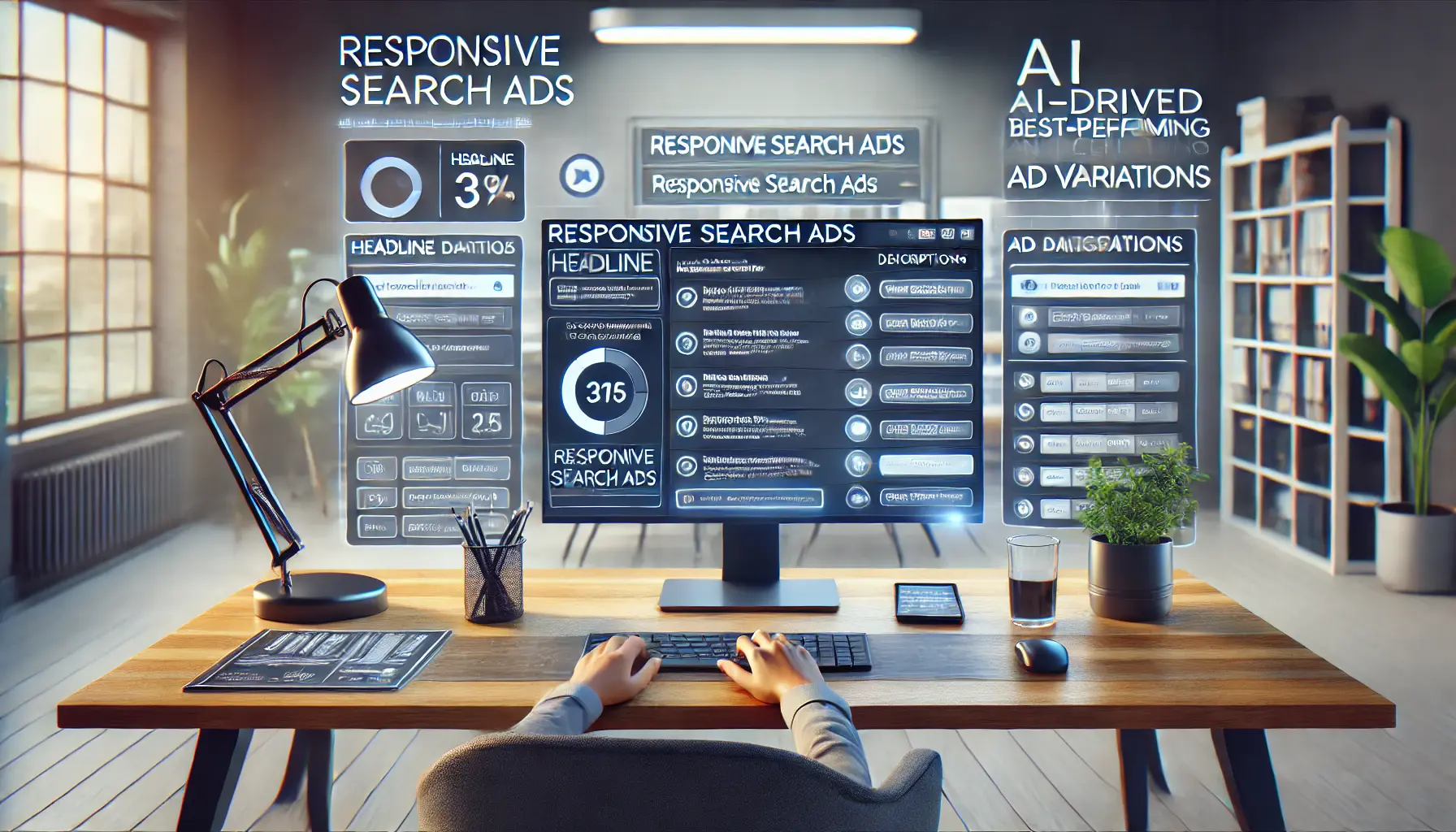
Responsive search ads: Tailoring ad variations for maximum performance.
Using Responsive Search Ads Effectively
Responsive Search Ads (RSAs) are a game-changer in ad customization.
They allow you to create multiple headlines and descriptions, which Google then tests and optimizes to find the best-performing combinations.
- Maximizing Variety: Apply diverse headlines and descriptions that target different audience segments.
- Improving Performance: Google’s algorithm learns over time which combinations work best.
- Saving Time: RSAs save you from having to test variations of ad copy manually.
Adopting RSAs ensures your campaigns are agile, responsive, and more suited for the right audience.
Automation on Google Ads isn’t a fad—it is the future of digital marketing.
By embracing these tools, you can do a lot more than just optimize your campaigns—you can achieve unprecedented results.
So, are you ready to take your campaigns to the next level with automation?
Automation in Google Ads is reshaping marketing by saving time, improving targeting, and driving performance. Leverage tools like Smart Campaigns and Predictive Bidding to optimize results efficiently.

Navigating privacy changes in digital advertising with secure and compliant strategies.
Navigating Privacy Changes in Digital Advertising
In today’s digital landscape, privacy regulations are reshaping how advertisers operate.
To maintain effective campaigns, it’s crucial to understand these changes and adapt accordingly.
How can you ensure your strategies align with new privacy standards?

The impact of third-party cookie deprecation on digital marketing strategies and privacy concerns.
Understanding the Impact of Third-Party Cookie Deprecation
The phase-out of third-party cookies is transforming digital advertising.
Third-party cookies have traditionally allowed tracking user behavior across sites, enabling targeted advertising.
However, growing privacy concerns and regulations are leading to their decline.
Google’s initial plan to eliminate third-party cookies in Chrome has evolved.
Instead of a complete removal, Chrome will prompt users to make informed choices about cookie usage, similar to Apple’s approach.
This shift emphasizes the need for advertisers to rethink their data strategies.
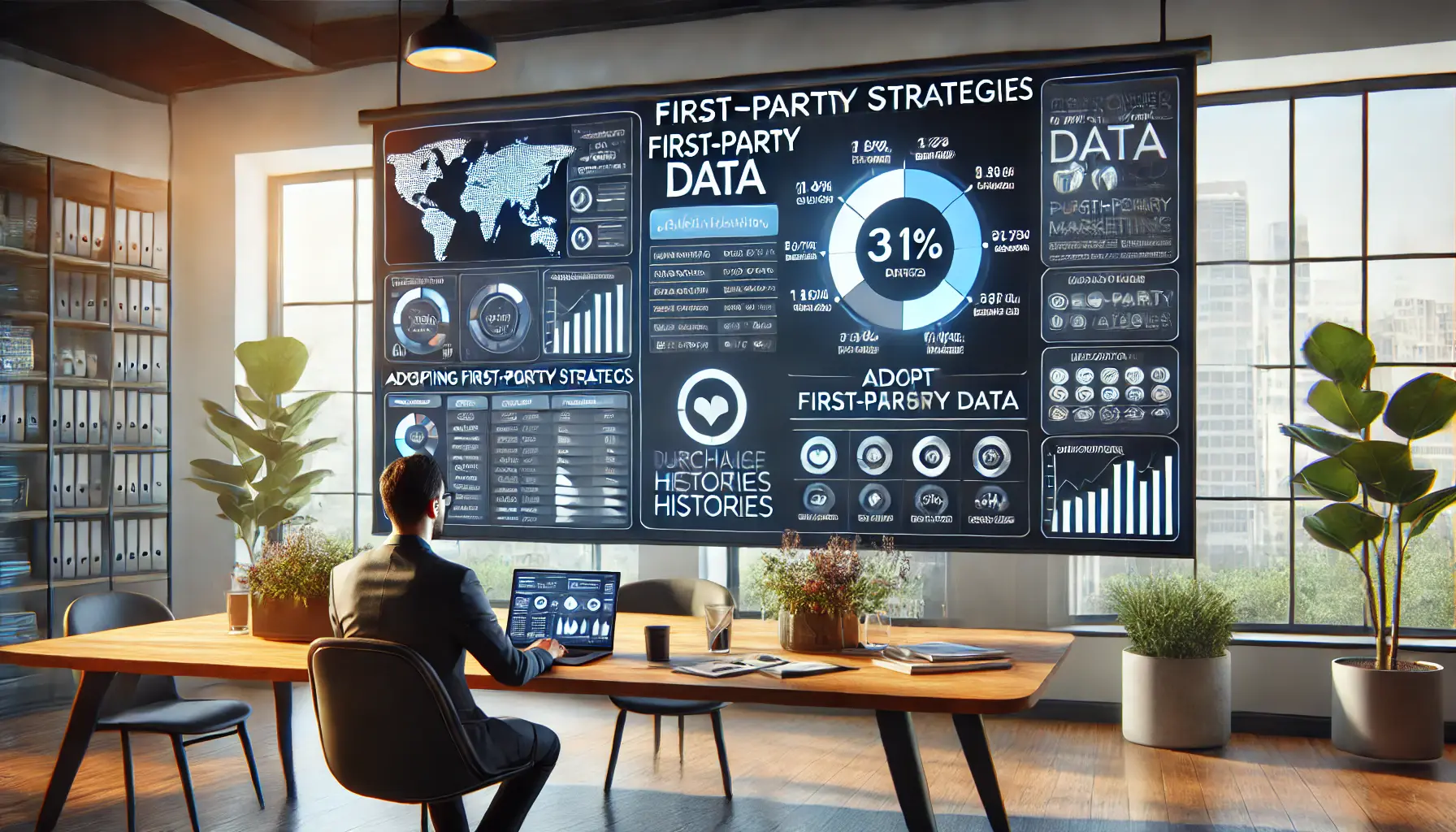
undefined
Adopting First-Party Data Strategies
With third-party data becoming less reliable, first-party dataInformation collected directly from your audience through interactions with your brand.—information collected directly from your audience—has become invaluable.
This data includes:
- Website Interactions: Tracking how users navigate your site.
- Purchase Histories: Understanding past buying behaviors.
- Subscription Details: Information gathered from newsletter sign-ups.
Implementing a robust first-party data strategy involves:
- Transparent Data Collection: Clearly communicating data usage to users and obtaining consent.
- Data Integration: Integrating data from different touchpoints for a comprehensive view.
- Personalized Marketing: Using insights to create personalized marketing, increasing relevance and engagement.
By focusing on first-party data, you build direct relationships with your audience, fostering trust and improving campaign effectiveness.

Ensuring privacy compliance with global regulations like GDPR and CCPA in digital marketing campaigns.
Ensuring Compliance with Global Privacy Regulations
Navigating the complex landscape of global privacy laws is essential.
Key regulations include:
- General Data Protection Regulation (GDPR): Governing data protection and privacy in the European Union.
- California Consumer Privacy Act (CCPA): Addressing data privacy rights in California.
- Emerging State Laws: New regulations in states like Colorado, Florida, and Texas, effective in 2024.
To ensure compliance:
- Stay Informed: Regularly refresh your knowledge about privacy laws in the various regions you operate within.
- Implement Consent Mechanisms: Leverage tools like Google’s Consent Mode to adjust tags based on user consent in alignment with users’ privacy preferences.
- Conduct Regular Audits: Review data practices to identify and address potential compliance gaps.
By being proactive in managing compliance, you reduce risk and demonstrate respect for user privacy, which is increasingly important to consumers.
Adapting to privacy changes in digital advertising is not just about compliance; it’s about building trust and delivering value to your audience.
How will you adjust your strategies to thrive in this evolving environment?
Privacy changes, such as third-party cookie deprecation, require a shift to first-party data strategies. Stay compliant with regulations like GDPR and CCPA to build trust and maintain campaign effectiveness.

Enhancing brand safety through advanced controls to ensure ads appear in suitable environments.
Enhancing Brand Safety with Advanced Controls
In the evolving landscape of digital advertising, ensuring that your ads appear alongside appropriate content is crucial for maintaining brand integrity.
Google Ads offers a suite of advanced controls to help you manage where your ads are displayed, safeguarding your brand’s reputation.
How can you effectively utilize these tools to enhance brand safety?
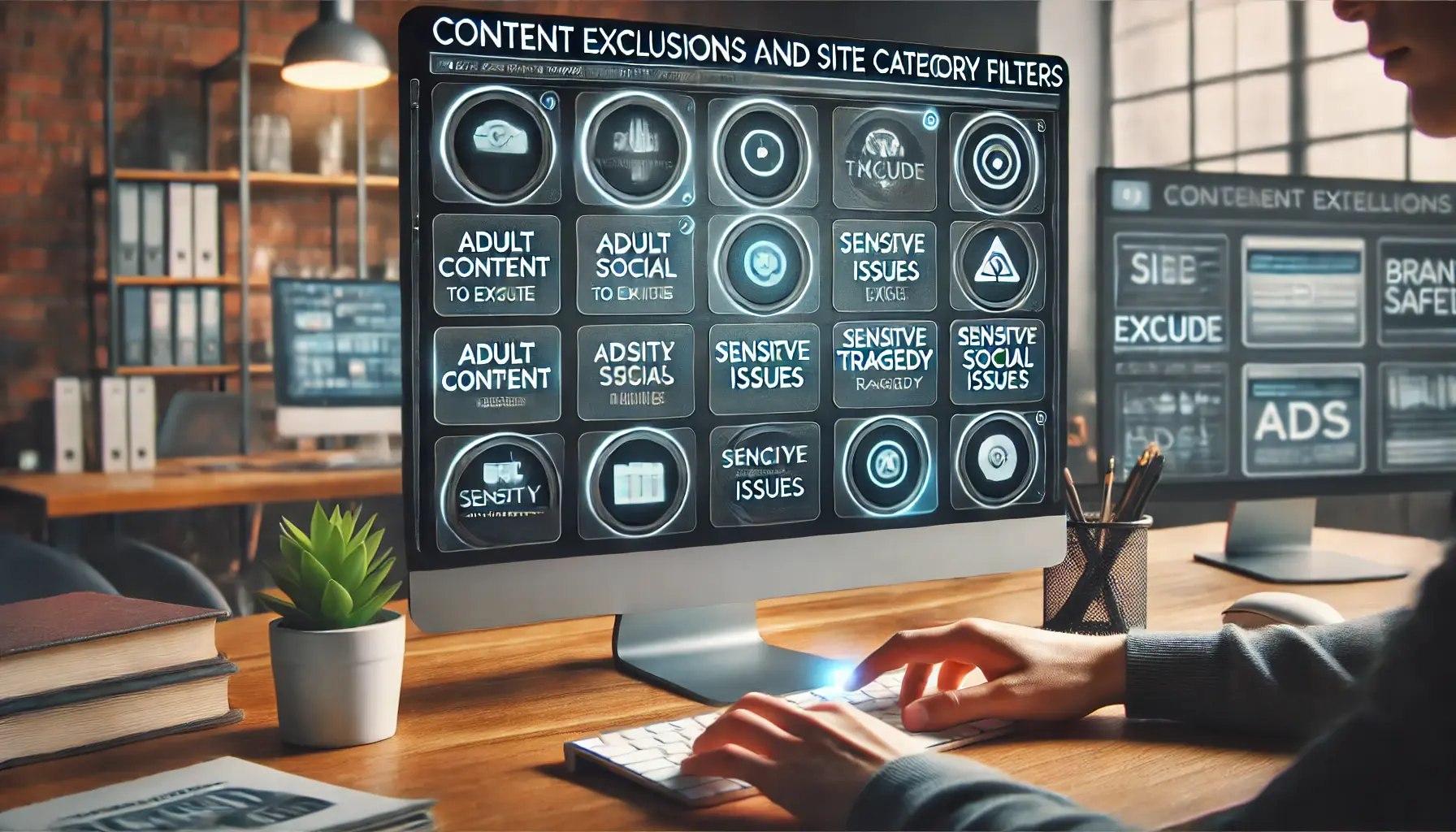
undefined
Setting Up Content Exclusions and Site Category Filters
With Google Ads, you can exclude your ads from appearing on websites or videos that do not align with your brand’s values.
By applying site category filters, you can exclude types of content such as:
- Adult Content: Ensures that your ad does not appear alongside explicit material.
- Sensitive Social Issues: Prevents your ad from showing on highly controversial topics.
- Tragedy and Conflict: Avoids content related to disasters or conflicts.
Implementing these filters helps maintain a positive association between your brand and the content it appears alongside.
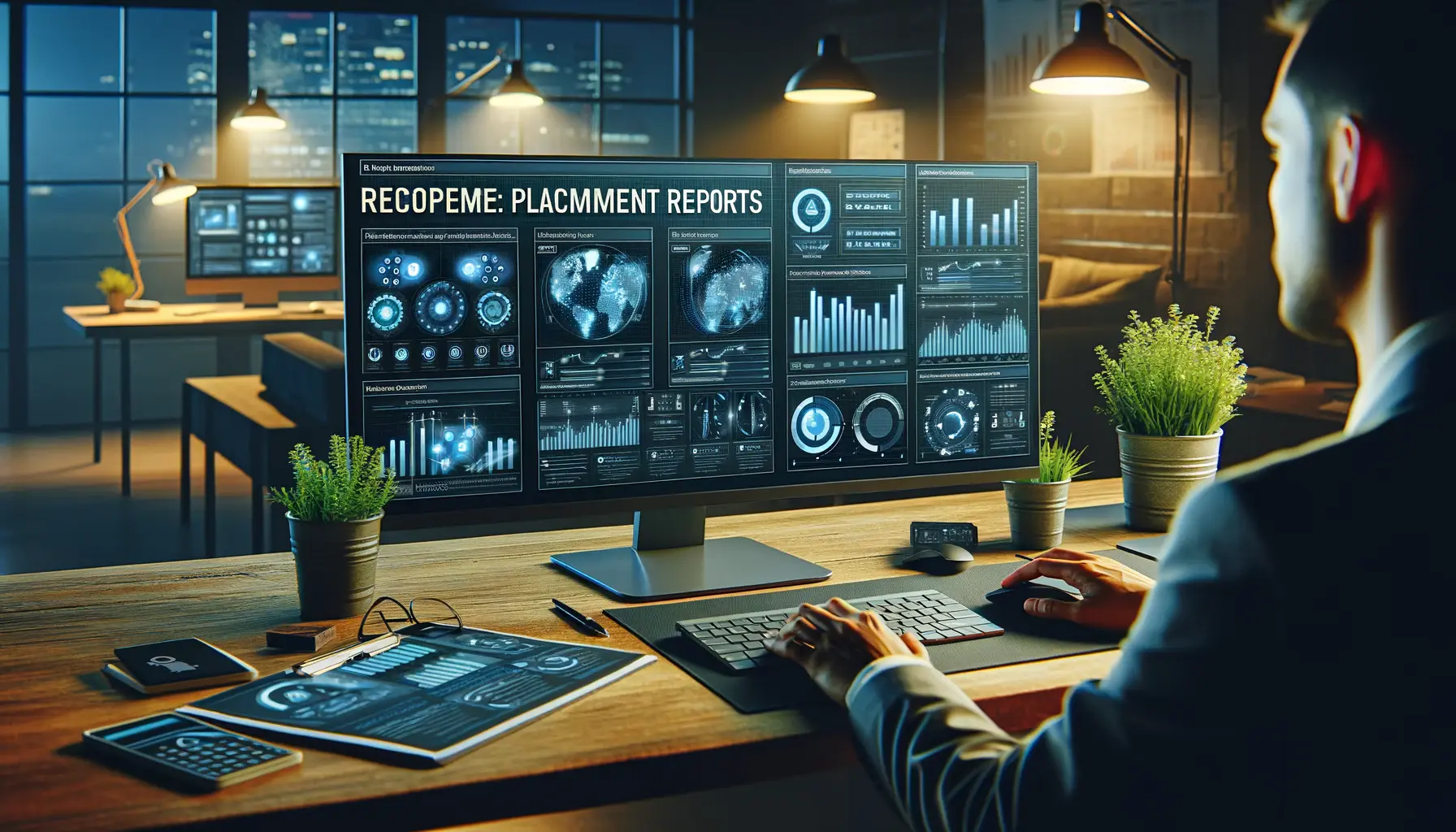
Using placement reports for transparency to optimize ad placements and improve campaign performance.
Utilizing Placement Reports for Transparency
Placement reports in Google Ads provide detailed insights into where your ads have been shown.
Regularly reviewing these reports allows you to:
- Identify Inappropriate Placements: Spot any sites or apps that do not align with your brand.
- Exclude Specific Placements: Manually prevent your ads from appearing on undesirable sites.
- Optimize Ad Performance: Focus your budget on placements that yield the best results.
By actively managing placements, you ensure your ads are displayed in suitable environments.
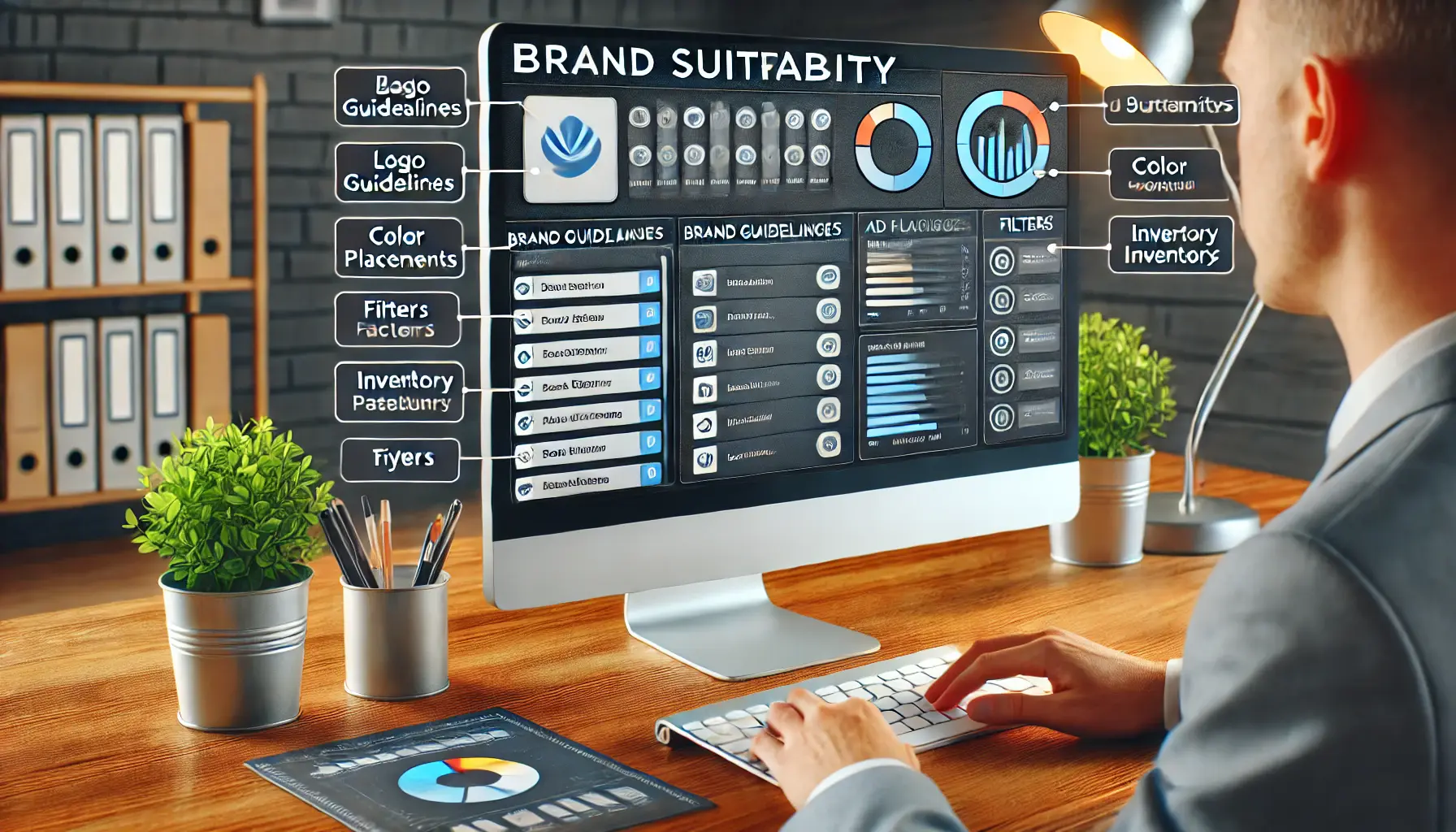
Implementing brand suitability measures to align ads with brand values and identity.
Implementing Brand Suitability Measures
Beyond basic safety, brand suitability involves aligning your ads with content that reflects your brand’s identity.
Brand suitability controls available in Google Ads enable you to:
- Define Brand Guidelines: Specify elements such as fonts, colors, and logos to maintain consistency across ads.
- Apply Brand Exclusions: Prevent ads from showing alongside specific brands or competitors.
- Set Inventory Types: Choose to show ads in standard, expanded, or limited inventory to control the content context.
These measures enable you to tailor your ads to resonate with your target audience while protecting your brand image.
By leveraging these advanced controls, you can confidently navigate the complexities of digital advertising, ensuring your brand is represented appropriately across the vast online landscape.
How will you enhance your brand safety strategies to align with your company’s values?
Use advanced brand safety tools like content exclusions and placement reports to protect your reputation. Align ad placements with your brand values to maintain integrity and improve relevance.
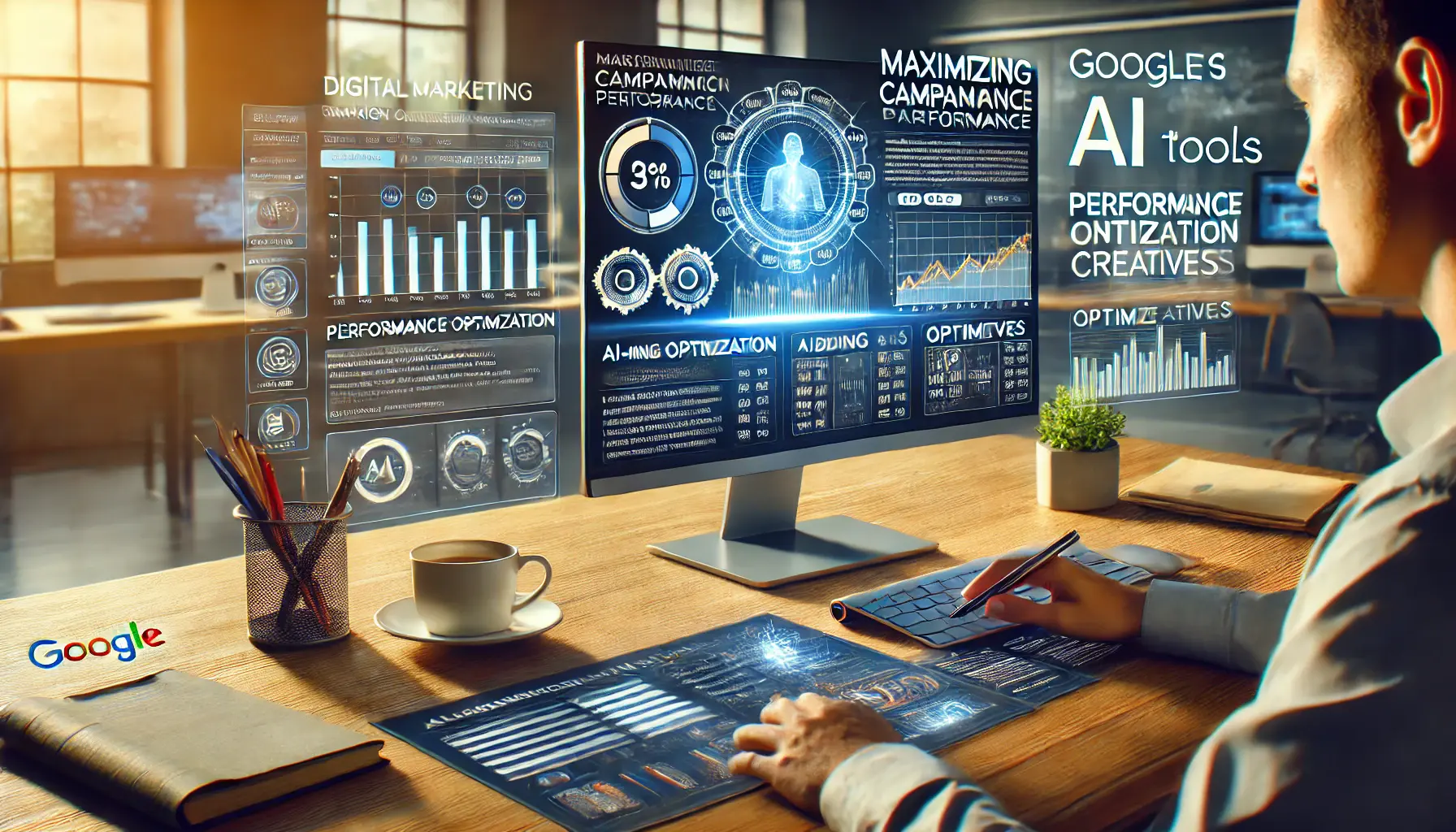
Maximizing campaign performance using AI-powered tools for optimization and real-time data analysis.
Maximizing Campaign Performance with Google’s AI-Powered Tools
In the dynamic realm of digital marketing, leveraging artificial intelligence (AI) is essential for optimizing campaign performance.
Google Ads offers a suite of AI-driven tools designed to enhance your advertising efforts.
How can you effectively harness these tools to achieve superior results?
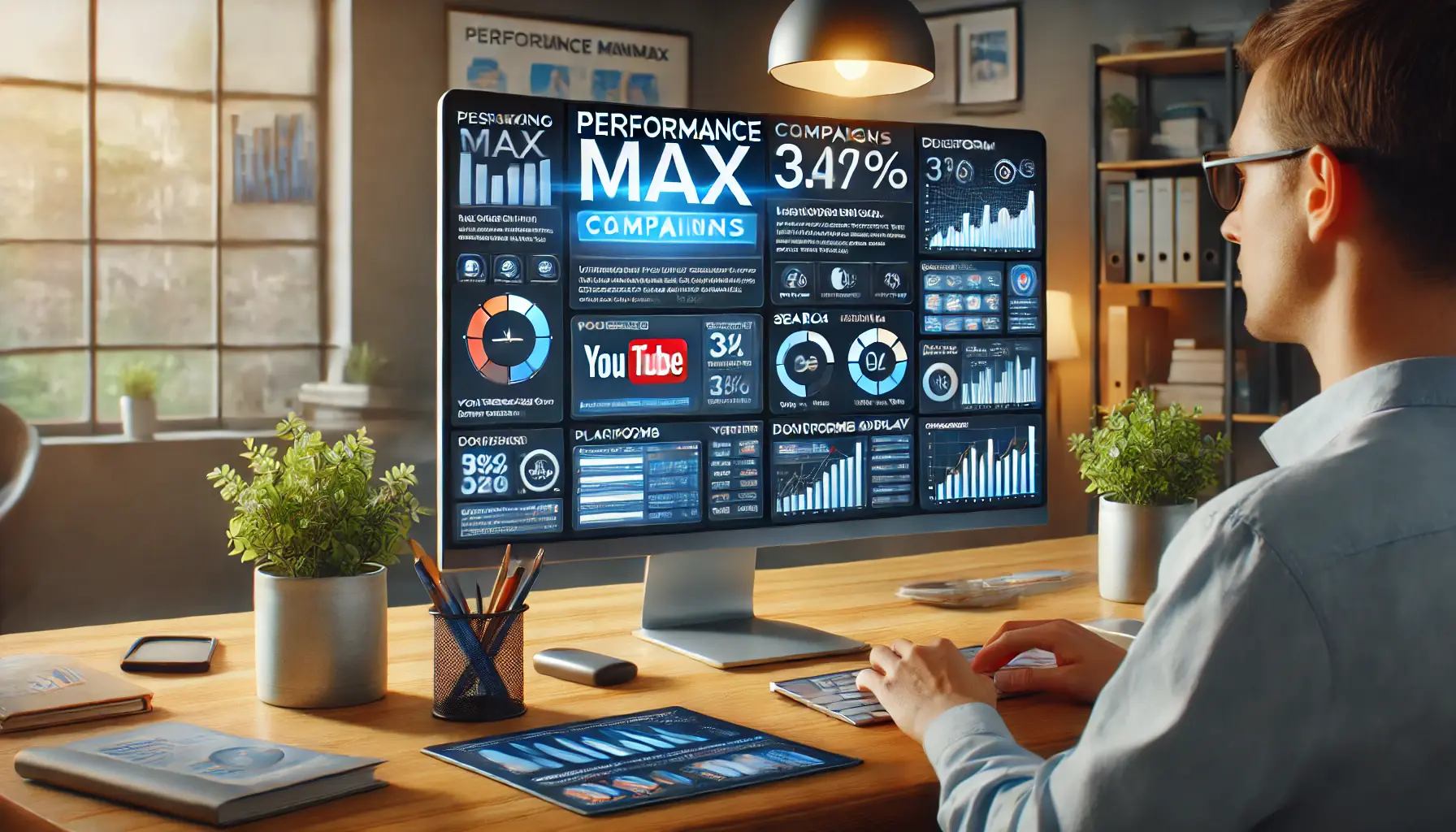
Utilizing Performance Max campaigns to drive conversions across Search, YouTube, and Display platforms.
Utilizing Performance Max Campaigns
Performance Max campaigns use Google’s AI to dynamically allocate your budget across Search, YouTube, Display, and more.
This allows you to:
- Expand Reach: Reach a wider audience across multiple platforms.
- Optimize Bidding: Automatically adjust bids to maximize conversions.
- Enhance Creative Assets: Create and test diverse ad creatives for better engagement.
By integrating Performance Max campaignsA Google Ads campaign type that uses AI to allocate budgets across multiple channels for optimal results., you can streamline your advertising strategy and drive more conversions efficiently.

Implementing broad match keywords with smart bidding to optimize ad performance and maximize ROI.
Implementing Broad Match Keywords with Smart Bidding
Combining broad match keywordsA keyword match type in Google Ads that shows ads for searches related to the keyword in any order or form. with Smart Bidding allows Google’s AI to understand user intent and match your ads to relevant searches.
This strategy helps you:
- Capture Diverse Queries: Reach potential customers through various search terms.
- Improve Ad Relevance: Make your ads relevant to user intent for better engagement.
- Maximize ROI: Bid in real time to meet your marketing objectives.
The application of this combination increases your campaign’s flexibility and effectiveness in reaching the right audience.

Leveraging AI to create and optimize ad creatives for improved campaign performance.
Leverage AI in Creative Asset Generation
AI at Google is also applicable in the generation of ad creatives.
Using AI-generated assets, you can:
- Save Time: Automate diverse ad variations.
- Improve Personalization: Create ads targeting specific audience segments more precisely.
- Increase Engagement: Provide users with visually appealing and relevant ads.
By integrating AI into creative development, your ads will resonate with your target audience and improve overall campaign performance.
Unlock a better way to do digital marketing with the help of Google’s AI-powered tools.
How will you integrate these AI capabilities into your campaigns to stay ahead in the competitive landscape?
Google’s AI tools, such as Performance Max campaigns and Smart Bidding, streamline campaign management and improve results. Harness these capabilities for optimized performance and ROI.
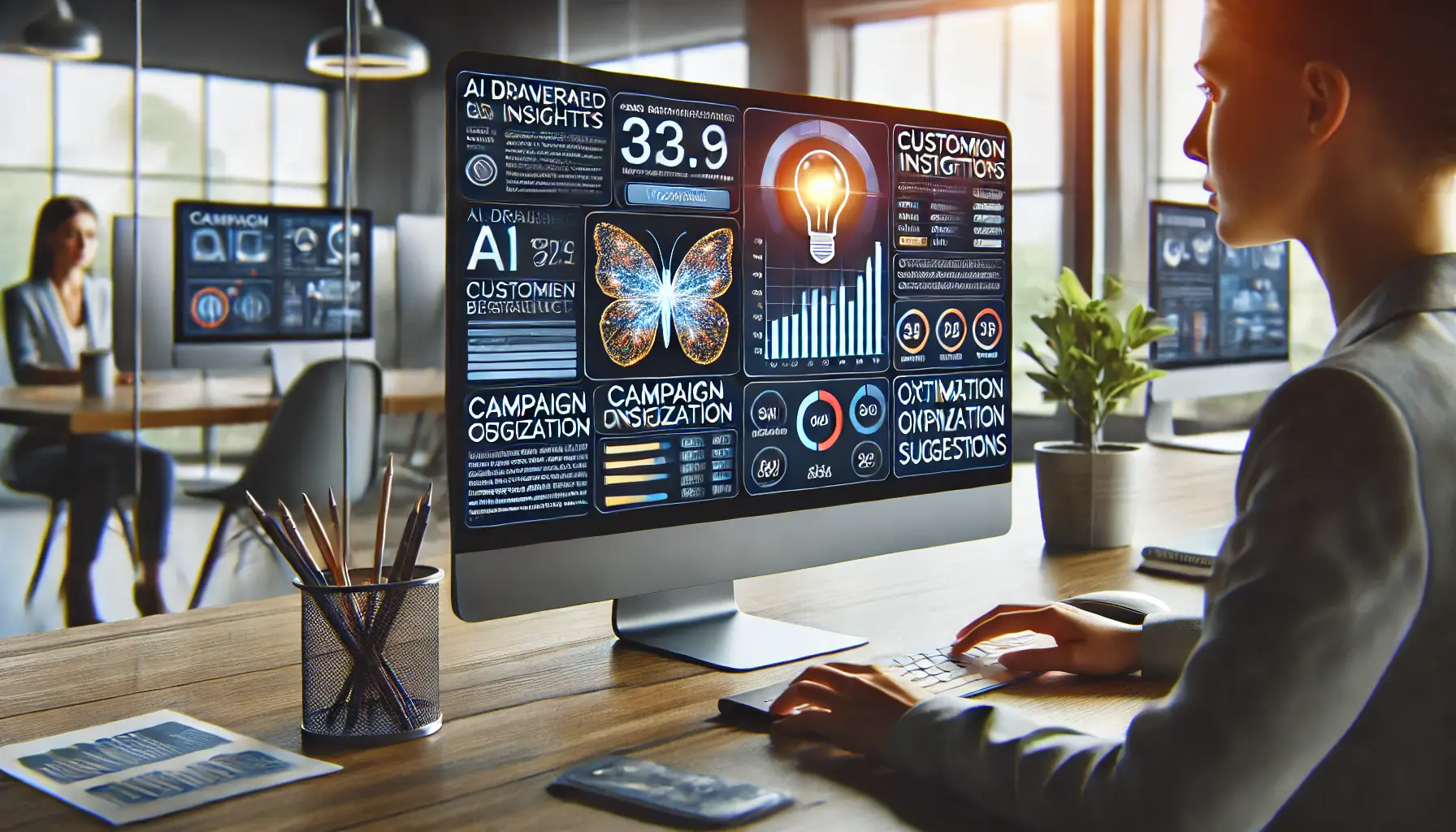
Leveraging AI-driven insights to optimize digital marketing campaigns and improve performance.
Leveraging AI-Driven Insights for Campaign Optimization
In the competitive landscape of digital marketing, harnessing AI-driven insights is crucial for optimizing your Google Ads campaigns.
These insights empower you to make data-informed decisions, enhancing performance and achieving your marketing objectives.
How can you effectively utilize these AI-powered tools to elevate your campaigns?

Understanding AI-driven insights in Google Ads to optimize campaign performance.
Understanding AI-Driven Insights in Google Ads
Google Ads utilizes artificial intelligence to analyze vast amounts of data, providing actionable insights that help you:
- Identify Trends: Detect emerging patterns in consumer behavior and market dynamics.
- Optimize Performance: Receive recommendations to improve ad relevance and bidding strategies.
- Enhance Targeting: Refine audience segments for more precise ad delivery.
By leveraging these insights, you can make informed decisions that drive better results.

Implementing AI-powered recommendations to optimize bidding, targeting, and creatives for better campaign performance.
Implementing AI-Powered Recommendations
Google Ads offers AI-powered recommendations to help you optimize your campaigns.
To do this effectively:
- Review Regularly: Go into the Recommendations tab to keep up-to-date with new opportunities.
- Prioritize Actions: Focus on recommendations that will have the most impact on your goals.
- Test and Measure: Make changes in increments to see how they work.
By doing so, you ensure that you capitalize on AI-driven insights while maintaining control over your campaigns.

Utilizing AI to create and optimize ad creatives for enhanced engagement and relevance.
Utilizing AI for Creative Asset Development
AI can assist in the development of compelling ad creatives.
By leveraging AI-generated creative assets, you can:
- Save Time: Automate the creation of diverse ad variations.
- Enhance Personalization: Customize ads to a particular audience segment.
- Boost Engagement: Serve visually appealing and relevant ads to users.
Integrating AI in creative development ensures that your ads resonate with your target audience, improving campaign performance.
Embracing AI-driven insights and tools can take your Google Ads campaigns to the next level in terms of efficiency and effectiveness.
How will you use these AI capabilities in your strategies to keep yourself ahead in the competitive landscape?
AI-driven insights enable marketers to make data-informed decisions. Utilize Google Ads recommendations to enhance targeting, bidding, and creative assets for better campaign outcomes.

Adapting to campaign controls to optimize performance and drive success in digital marketing.
Adapting to Campaign Controls: A Path to Success
As digital marketing evolves, mastering campaign controls becomes crucial for achieving success in Google Ads.
The strategies and tools explored throughout this article offer invaluable insights into optimizing campaigns and staying ahead in a competitive landscape.
Let’s summarize the key takeaways that can help you adapt to the changing dynamics of campaign controls in 2024.

Embracing automation in digital marketing to enhance efficiency and streamline campaign management.
Embracing Automation for Maximum Efficiency
Automation continues to revolutionize campaign management.
By leveraging tools like Performance Max campaigns, automated bidding strategies, and responsive search adsA Google Ads feature that allows multiple headlines and descriptions to be tested automatically for better ad performance., marketers can save time, enhance targeting, and achieve better results.
Automation allows you to focus on strategic decisions while letting AI handle complex optimizations.

Navigating privacy changes with confidence using compliance tools and data privacy settings.
Navigating Privacy Changes with Confidence
With increasing privacy regulations and the decline of third-party cookies, adopting first-party data strategies is more important than ever.
By ensuring compliance with global privacy laws and utilizing tools like Google’s Consent ModeA Google tool that adjusts tag behavior based on user consent for privacy compliance., advertisers can build trust with their audience while maintaining effective campaign performance.
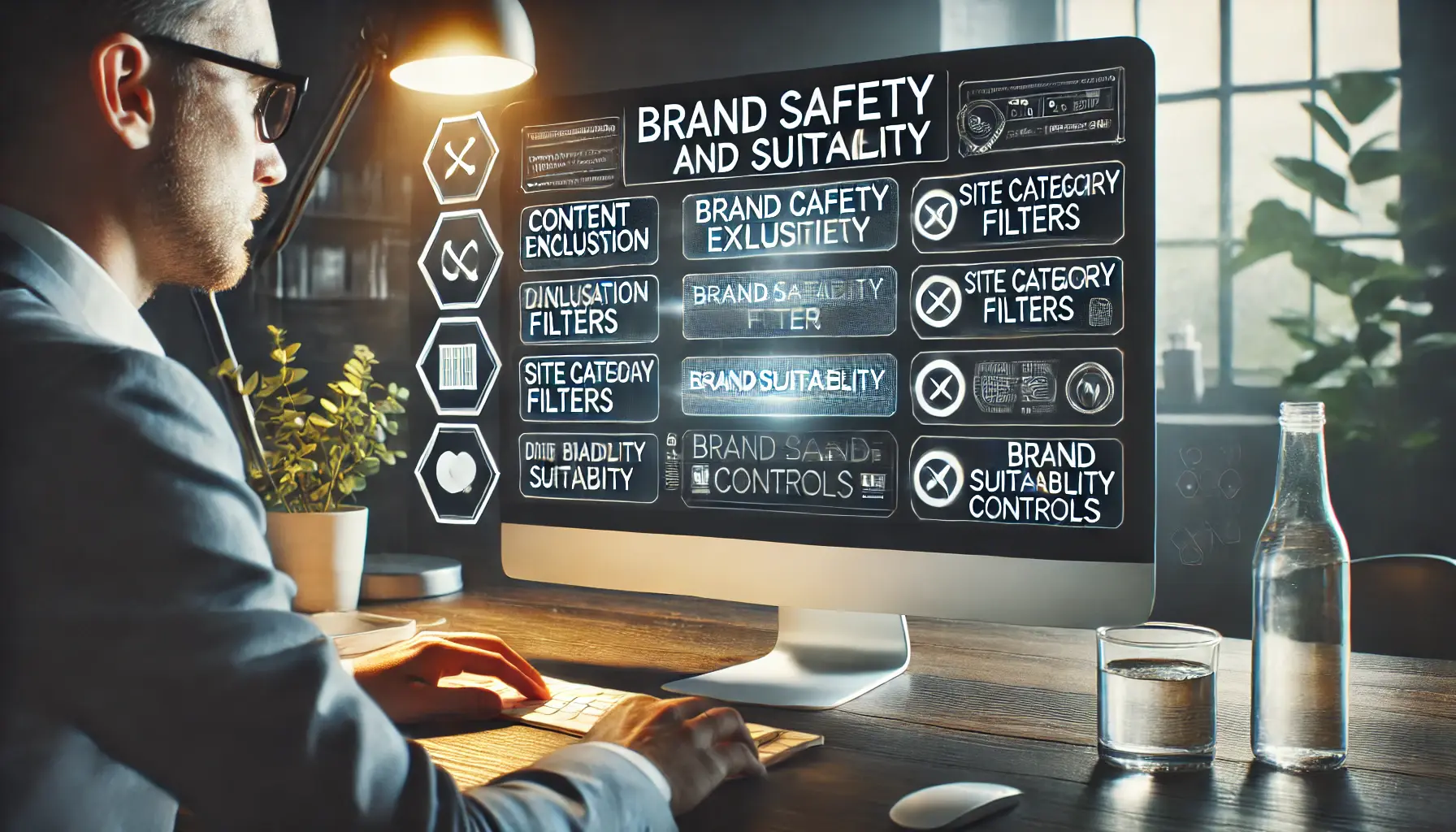
Enhancing brand safety and suitability with content exclusion filters and site category controls.
Enhancing Brand Safety and Suitability
Protecting a brand’s reputation is essential.
Advanced controls within Google Ads enable marketers to ensure their ads serve in appropriate and impactful contexts through content exclusions, placement reports, and inventory settings.
These tools not only protect your brand but also improve ad relevance and performance.

Unleashing the power of AI-driven insights to optimize campaign performance.
Unleashing AI-Driven Insights
AI-powered tools and recommendations empower marketers to make data-driven decisions.
From identifying trends to optimizing bidding and creative assets, AI plays a pivotal role in enhancing campaign effectiveness.
By integrating these insights, you can fine-tune your strategies and achieve measurable results.

Looking ahead: Planning digital marketing strategies for 2024 with a focus on future goals and trends.
Looking Ahead: Strategies for 2024
As we move further into 2024, flexibility is the watchword.
The continuous innovations and updates in Google Ads introduce exciting opportunities to refine your campaigns.
By embracing such changes and applying the discussed strategies, you position yourself for success in an ever-changing digital marketing landscape.
Adapting to campaign controls is not just about keeping up with trends—it’s about leveraging them to create impactful, data-driven campaigns that resonate with your audience.
How will you implement these strategies to drive growth and maximize your advertising potential?
Mastering campaign controls is vital for digital marketing success in 2024. Embrace automation, privacy compliance, and brand safety measures to stay competitive and achieve growth.
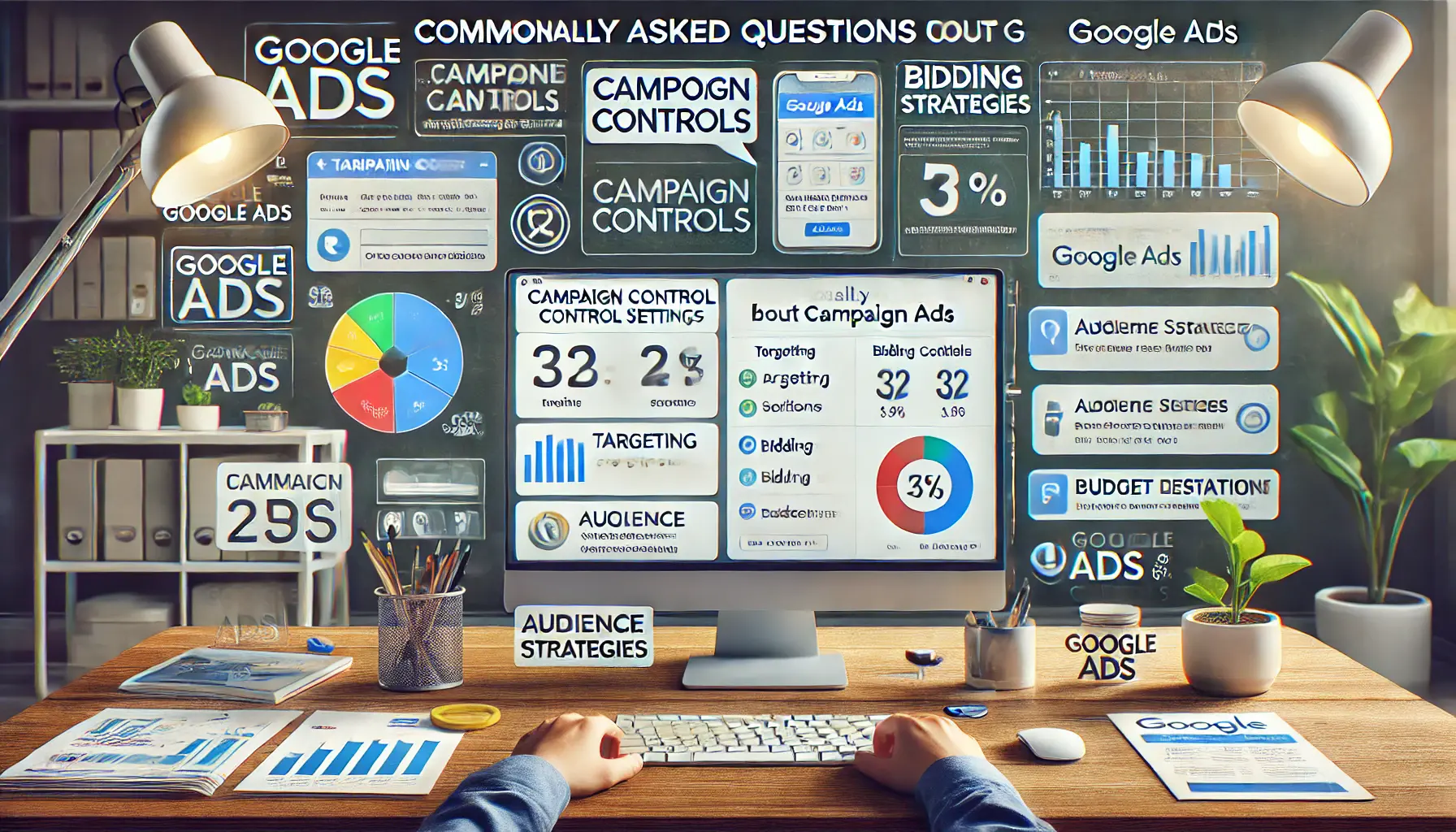
Answering common questions about Google Ads campaign controls to optimize settings and performance.
Your campaigns can be managed by an agency specialized in Google Ads, check out our service page.
Commonly Asked Questions About Campaign Controls on Google Ads
As technology in digital advertising keeps evolving, understanding campaign controls in Google Ads becomes crucial.
To help you navigate these changes effectively, here are several common questions and concise responses to guide you in detail.
Performance Max utilizes Google’s AI to optimize performance across multiple channels, including Search, YouTube, and Display, aiming for maximum conversions and a wider audience reach.
The phase-out of third-party cookies limits cross-site tracking, requiring a shift to first-party data strategies and privacy-compliant tracking methods to maintain effective audience targeting.
Google’s Consent Mode allows advertisers to adjust how Google tags behave based on user consent, ensuring compliance with privacy regulations while preserving campaign measurement capabilities.
Utilize content exclusions, site category filters, and placement reports to control where your ads appear, ensuring alignment with your brand’s values and maintaining its integrity.
Automated bidding uses machine learning to set optimal bids for your ads, aiming to achieve specific goals like maximizing conversions or target return on ad spend (ROAS).
Responsive search ads allow you to input multiple headlines and descriptions, with Google’s AI testing combinations to identify the most effective ad variations for your audience.
First-party data is information collected directly from your audience.
Leveraging it enables personalized marketing and compliance with privacy regulations, enhancing overall campaign effectiveness.
Stay updated on laws such as GDPR and CCPA, practice transparency in data collection, and use Google’s Consent Mode to align with user consent requirements.
Demand Gen helps you reach up to 3 billion monthly active users across YouTube, Gmail, and Discover—all in one campaign—to build brand awareness and drive interest in your brand.


